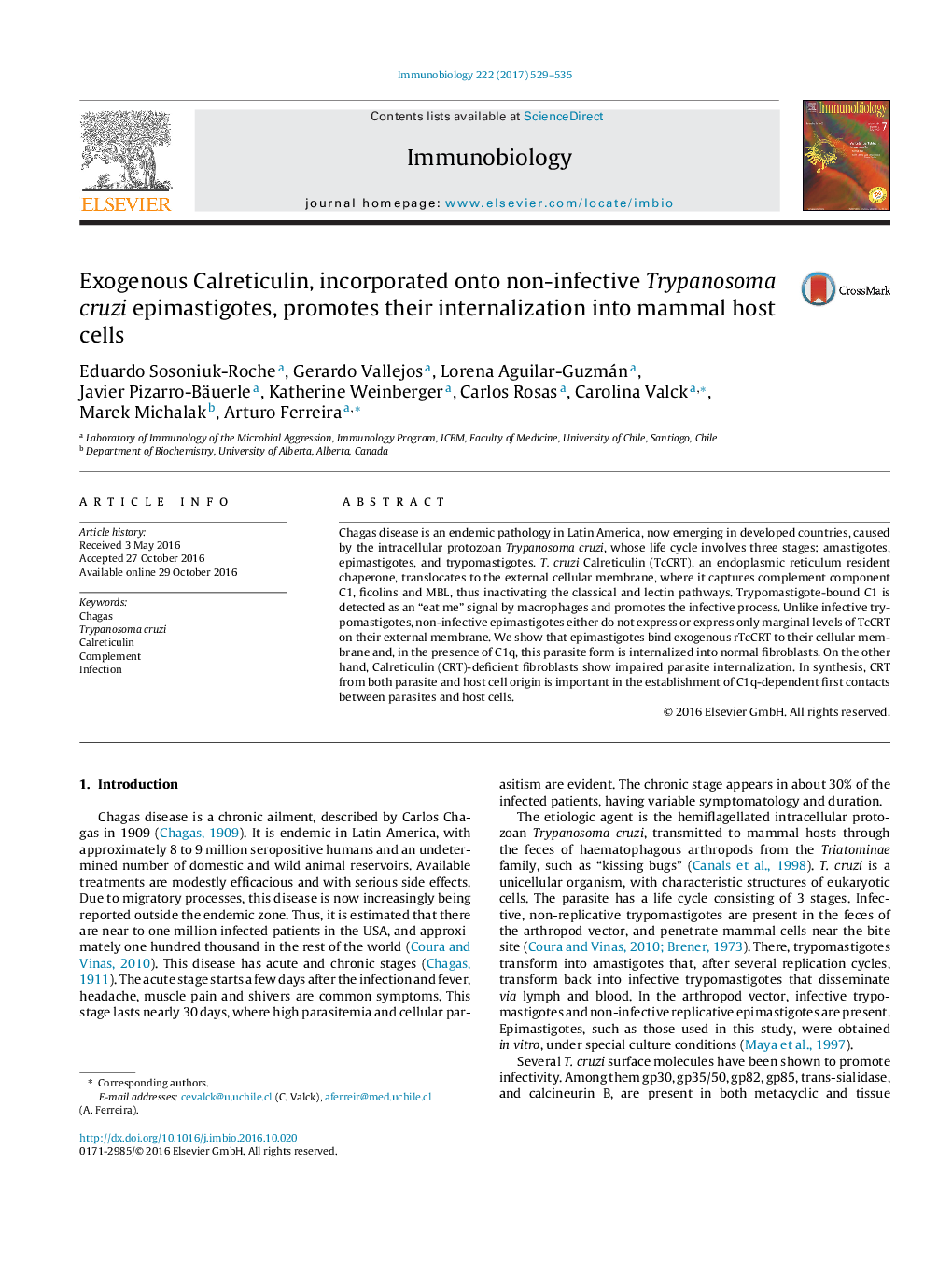| کد مقاله | کد نشریه | سال انتشار | مقاله انگلیسی | نسخه تمام متن |
|---|---|---|---|---|
| 5533202 | 1402107 | 2017 | 7 صفحه PDF | دانلود رایگان |
Chagas disease is an endemic pathology in Latin America, now emerging in developed countries, caused by the intracellular protozoan Trypanosoma cruzi, whose life cycle involves three stages: amastigotes, epimastigotes, and trypomastigotes. T. cruzi Calreticulin (TcCRT), an endoplasmic reticulum resident chaperone, translocates to the external cellular membrane, where it captures complement component C1, ficolins and MBL, thus inactivating the classical and lectin pathways. Trypomastigote-bound C1 is detected as an “eat me” signal by macrophages and promotes the infective process. Unlike infective trypomastigotes, non-infective epimastigotes either do not express or express only marginal levels of TcCRT on their external membrane. We show that epimastigotes bind exogenous rTcCRT to their cellular membrane and, in the presence of C1q, this parasite form is internalized into normal fibroblasts. On the other hand, Calreticulin (CRT)-deficient fibroblasts show impaired parasite internalization. In synthesis, CRT from both parasite and host cell origin is important in the establishment of C1q-dependent first contacts between parasites and host cells.
Journal: Immunobiology - Volume 222, Issue 3, March 2017, Pages 529-535
